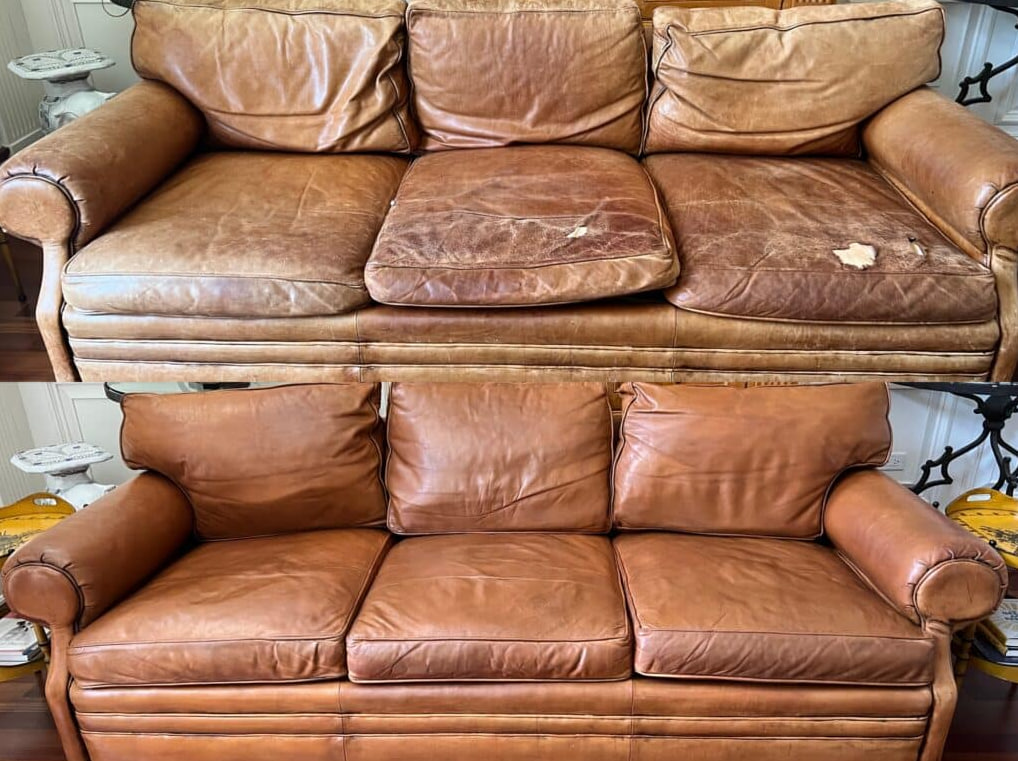Leather Sofa Repair: Restoring Comfort and Elegance
Leather sofas are timeless pieces of furniture that combine luxury, durability, and classic style. When properly cared for, they can last for decades, becoming a centerpiece of any living space. However, even the finest leather can eventually show signs of wear — cracks, scratches, fading, or sagging cushions. The good news is that most leather sofa issues are repairable, and with the right approach, your furniture can be restored to look and feel as good as new.
Understanding Common Leather Sofa Damage
Leather, while known for its strength and resistance, is still a natural material. Over time, it can dry out, especially in dry or sun-exposed environments, leading to surface cracks and fading. Everyday use can cause the leather to stretch or crease, while pets and accidents may leave scratches, tears, or stains.
Another common issue is cushion wear — either the leather cover starts to wrinkle or the internal foam loses its support. In some cases, the damage might extend to the frame, causing the sofa to squeak or sink in certain areas.
Identifying the type and extent of damage is the first step in any successful leather sofa repair. It also helps determine whether the repair is a DIY-friendly task or requires a professional.
When DIY Repair Works — and When It Doesn’t
Minor damage, such as small scratches, scuffs, or fading, can often be treated at home with a leather repair kit or conditioning cream. These products typically include color-matching solutions, fillers for surface cracks, and sealants that restore shine and softness. Leather conditioning creams also help rehydrate the material, preventing further cracking.
However, not all problems are suitable for a home fix. Deep tears, pet claw damage, dye transfer stains, or extensive sun fading usually call for professional attention. Attempting complex repairs without experience can make the issue worse, especially if you use the wrong color match or over-apply filler.
In general, if the leather is structurally sound and the damage is cosmetic, DIY repair may be possible. But for structural issues, large areas of damage, or high-value furniture, it’s worth investing in a professional repair service.
What to Expect from Professional Leather Sofa Repair
Professional leather repair technicians are skilled in restoring various types of leather, including aniline, semi-aniline, and pigmented finishes. The process typically begins with a thorough cleaning and assessment of the sofa. Next, any damaged areas are treated with specialized tools and materials — for example, liquid leather fillers to mend cracks or tears, color restoration compounds to even out faded areas, and protective topcoats to seal the repairs.
In cases of deep damage, a technician may replace a panel of leather, reinforce worn-out cushions, or rebuild sections of the frame. This is often done in a way that preserves the original appearance and texture of the leather, maintaining the overall look of the piece.
One of the biggest advantages of hiring a professional is color matching. Achieving the perfect shade, especially with older or naturally faded leather, requires expert eye and experience. Professionals use pigments that blend seamlessly into the original finish, avoiding mismatched patches or unnatural gloss.
Costs and Timeframes
The cost of leather sofa repair varies depending on the severity of the damage, the size of the sofa, the type of leather, and the level of restoration needed. Small surface repairs might cost under $100, while more complex jobs — like panel replacement or full re-dyeing — can range from $200 to $600 or more.
Most repairs can be completed in a few hours to a couple of days. Some services offer in-home repairs, while others may require the sofa to be taken off-site. In either case, the turnaround is typically faster and more affordable than replacing the furniture entirely.
Preventing Future Damage
After repairing your leather sofa, it’s essential to protect it from future wear. Regularly applying leather conditioner (every 6–12 months) helps maintain flexibility and prevents drying out. Keeping the sofa out of direct sunlight and away from heat sources also extends its lifespan. Using soft, clean cloths for dusting and immediately wiping spills helps preserve the finish and avoid staining.
If you have pets or children, consider using throw blankets or fitted covers in high-use areas to protect the leather from accidental damage. Some owners also apply leather protection creams that repel stains and reduce friction damage.
A Smart Investment in Comfort and Style
Repairing a leather sofa is a smart alternative to replacement — not only for the cost savings, but for sustainability and sentiment. Whether your sofa is a family heirloom, a designer piece, or simply a favorite spot to relax, restoring it brings new life to your living space.
Working with experienced leather repair professionals ensures high-quality results and long-lasting comfort. In many cases, the restored sofa looks just as elegant — if not better — than when it was new.





Post Comment